1902 Search Results for video of the week
August 10, 2014
by Carole Zangari -
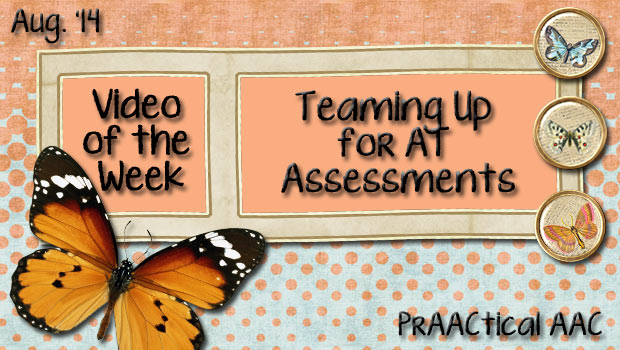
Allyson Robinson, SLP at the Oklahoma ABLE Tech Project, shares some thoughts on working as a team to conduct AT assessments that draw on the Quality Indicators for AT. Direct link to video: https://www.youtube.com/watch/?v=s3r8M-lFQfs
August 3, 2014
by Carole Zangari -
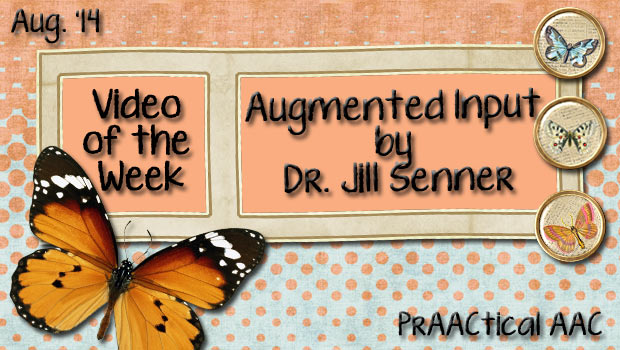
Work with learners who have difficulty processing language and are just learning to use their AAC systems? Dr. Jill Senner has a strategy for you! Thanks to DynaVox for hosting this terrific presentation. Direct link to video: http://www.dynavoxtech.com/training/toolkit/details.aspx?id=261
July 27, 2014
by Carole Zangari -
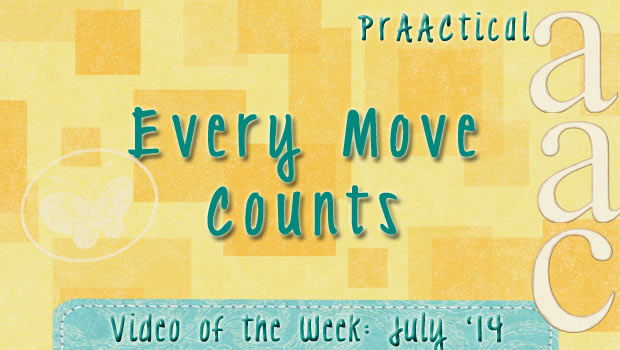
“Empowerment and participation come with the ability to to experience the world and communicate.” We’ve talked before about Every Move Counts, a program for building communication in individuals with significant sensory motor difficulties. If you aren’t familiar with what it has to offer, take a look. Direct Link to Video – https://www.youtube.com/watch?v=OV35UNwlZUU&index=8&list=PLF0FF133603F1E89F
July 20, 2014
by Carole Zangari -
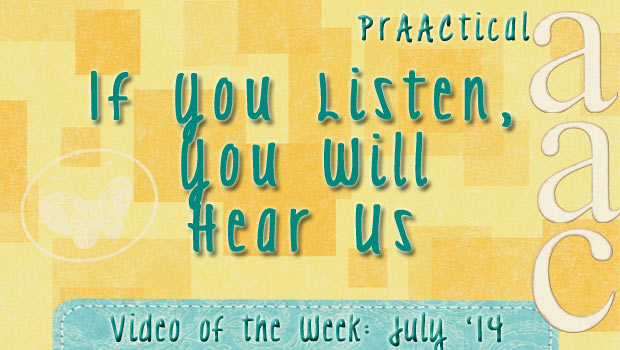
Not everyone communicates with words. Not everyone communicates with symbols. Not everyone communicates conventionally. But everyone communicates. Direct Link to Video: https://www.youtube.com/watch?v=Hp4PW17U_h8
July 13, 2014
by Carole Zangari -
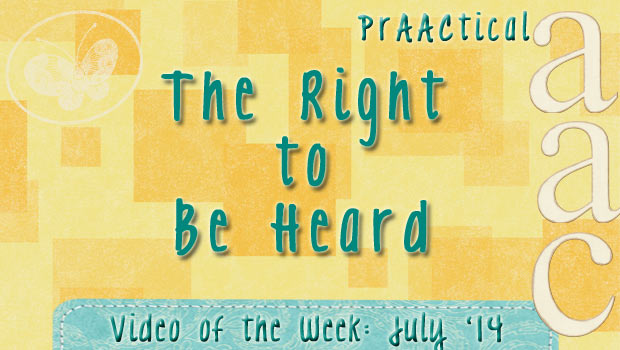
“People with disabilities are exposed to abuse at least four times more than the general population.” For this week’s featured video, we travel to Israel to learn about an initiative with the justice system that promotes the right of individuals with AAC needs to communicate in legal contexts. Kudos to ISAAC Israel and the many other organizations and individuals for their work on this important topic. Direct Link to Video: https://www.youtube.com/watch?v=Bgmli_aElYY&index=149&list=PLSDejtWRUZQqCqWogs1ME9Z1dXfxwvrrY
July 6, 2014
by Carole Zangari -
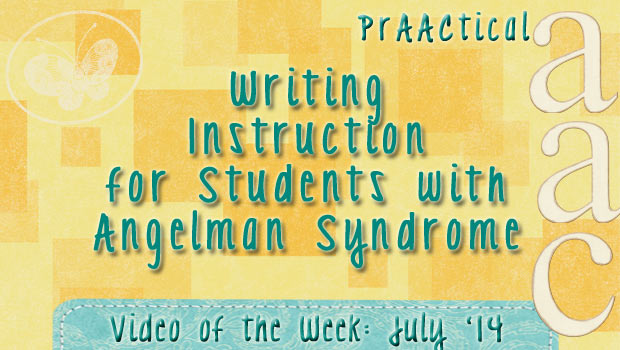
Today we return to the Angelman Syndrome Foundation and learn more about how to teach writing to children with Angelman Syndrome. Erin Sheldon shares prAACtical information that applies to MANY children with signficant communication challenges. This is a great video for us SLPs, but also one to share with families. Direct Link to Video: https://www.youtube.com/watch?v=iInuYeNraEU&feature=youtu.be
June 29, 2014
by Carole Zangari -
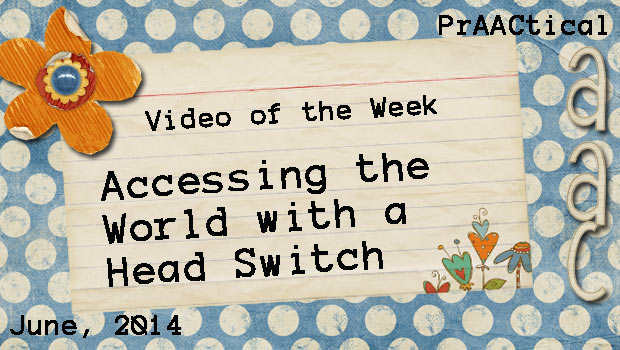
Nothing makes us smile like learning about AAC-related content from people who use technology to communicate their message to the world. In this post, we hear about and from film maker Christopher Hill. Take a peek at his presentation at the ILT 2014 conference. Direct Link to Video: https://www.youtube.com/watch?v=jFieqM09nSQ#t=510l
June 15, 2014
by Carole Zangari -
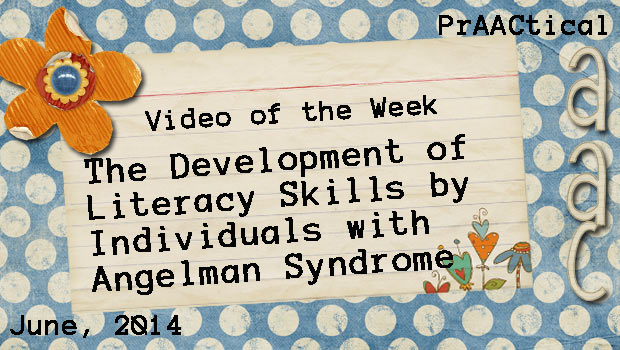
We’re so pleased to be able to share this terrific webinar presented by Erin Sheldon and hosted by the Angelman Syndrome Foundation. This presentation is chock full of prAACtical ideas for assessment and skill-building. Erin discusses a free literacy assessment tool, The Bridge, from the Center for Literacy and Disability Studies that you might want to download and keep handy as you watch the presentation. (We linked to it in a previous post and you can access it here.) Direct Link to Video – https://www.youtube.com/watch?v=yFgJLhYCPMo&feature=youtu.be
June 8, 2014
by Carole Zangari -
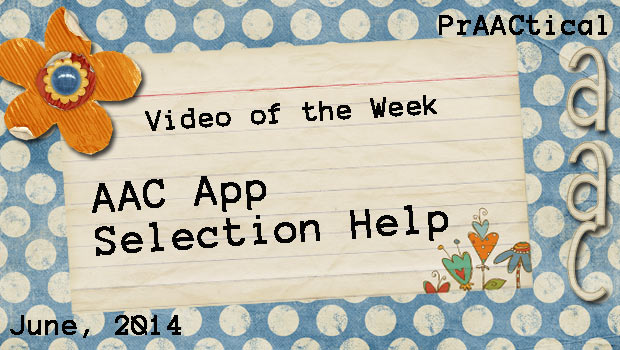
On my recent trip to Australia for the ILT2014 conference, I had a chance to spend more time learning more about the AAC Ferret, with the help of SLPs Charlene Cullen and Amanda Hartmann. Beneath the cute name and image is a a ton of information and an easy-to-use format that help SLPs in selecting AAC apps that meet the needs of an individual. If you use the feature match process in your evaluation (and we hope you do), you’ll be happy to know that this app can aid in identifying AAC apps by feature. SLP Katie Lyon explains some of the features of this helpful tool. Direct Link to Video: https://www.youtube.com/watch?v=KR3tjv7AZPQ
June 1, 2014
by Carole Zangari -
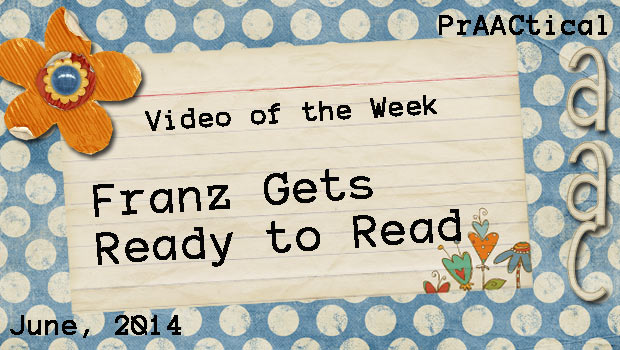
This video by occupational therapist Paul Andres is as endearing as it is informative. Check out Franz as he gets ready to read a book. This is a great video to share with families and other team members who may be unfamiliar with alternative ways of book reading. Direct link to video: https://www.youtube.com/watch?v=nfu8sQH6428









